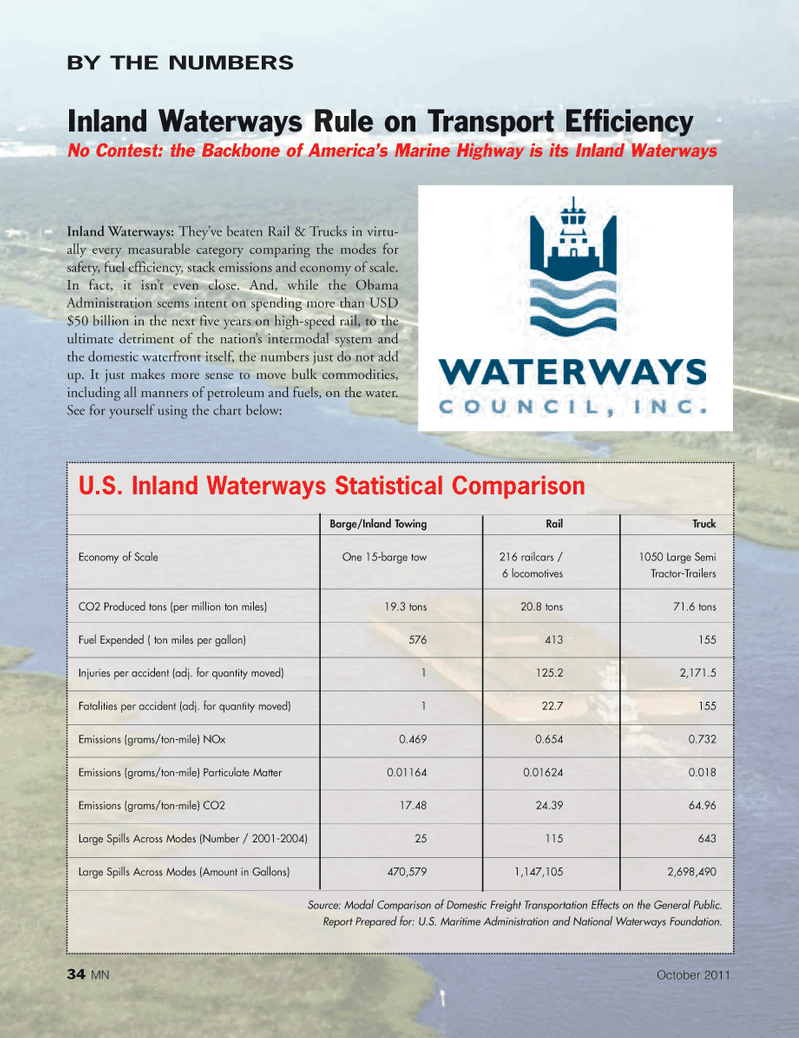
Page 34: of Marine News Magazine (October 2011)
The Yearbook
Read this page in Pdf, Flash or Html5 edition of October 2011 Marine News Magazine
Inland Waterways: They?ve beaten Rail & Trucks in virtu- ally every measurable category comparing the modes for safety, fuel efficiency, stack emissions and economy of scale. In fact, it isn?t even close. And, while the Obama Administration seems intent on spending more than USD $50 billion in the next five years on high-speed rail, to the ultimate detriment of the nation?s intermodal system and the domestic waterfront itself, the numbers just do not add up. It just makes more sense to move bulk commodities, including all manners of petroleum and fuels, on the water. See for yourself using the chart below: BY THE NUMBERSInland Waterways Rule on Transport Efficiency No Contest: the Backbone of America?s Marine Highway is its Inland Waterways U.S. Inland Waterways Statistical Comparison Barge/Inland Towing RailTruck Economy of ScaleOne 15-barge tow216 railcars / 1050 Large Semi6 locomotivesTractor-Trailers CO2 Produced tons (per million ton miles)19.3 tons20.8 tons71.6 tonsFuel Expended ( ton miles per gallon)576413155Injuries per accident (adj. for quantity moved)1125.22,171.5Fatalities per accident (adj. for quantity moved)122.7155Emissions (grams/ton-mile) NOx0.4690.6540.732Emissions (grams/ton-mile) Particulate Matter 0.011640.016240.018Emissions (grams/ton-mile) CO217.4824.3964.96Large Spills Across Modes (Number / 2001-2004)25115643Large Spills Across Modes (Amount in Gallons)470,5791,147,1052,698,490Source: Modal Comparison of Domestic Freight Transportation Effects on the General Public. Report Prepared for: U.S. Maritime Administration and National Waterways Foundation. 34MNOctober 2011MN#10 (32-49):MN 2011 Layouts 10/5/2011 1:56 PM Page 34

 33
33

 35
35
